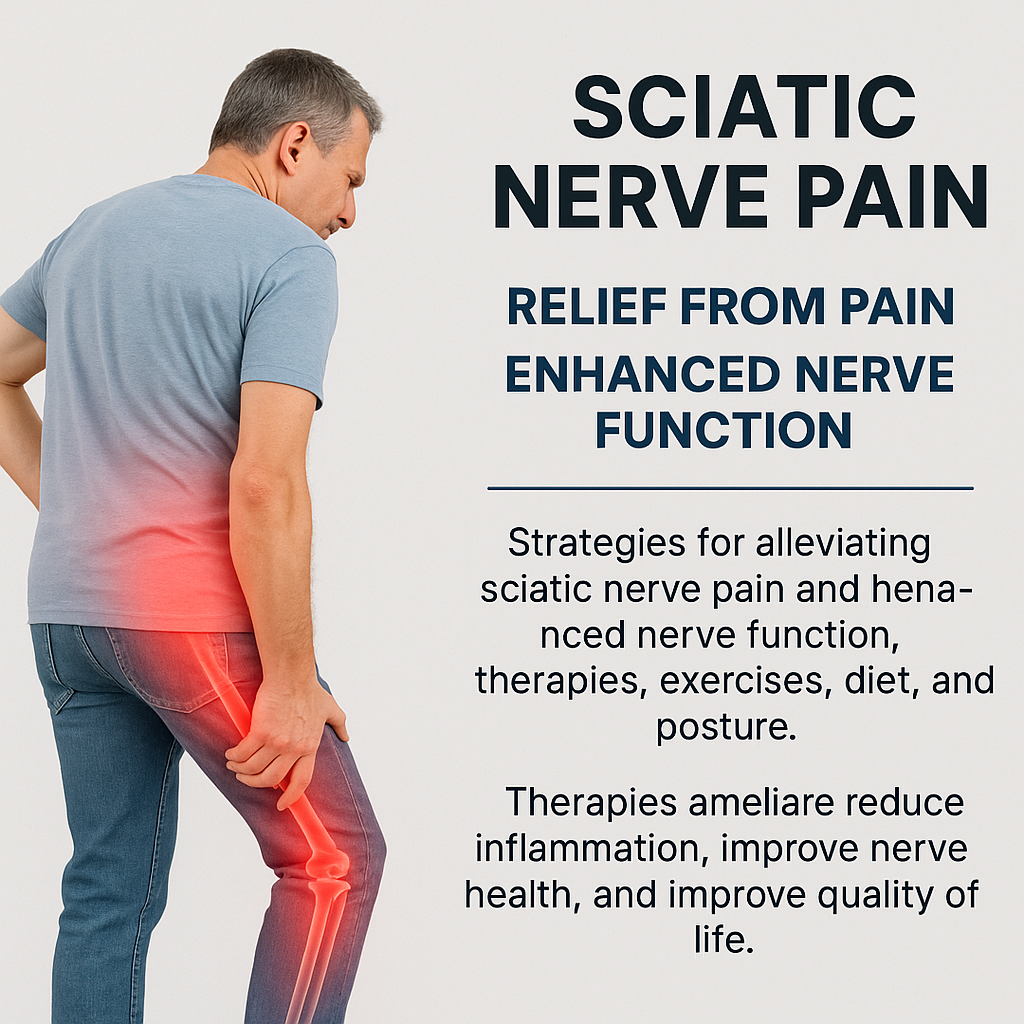
Understanding Sciatic Nerve Pain: Symptoms and Causes
Sciatic nerve pain, often referred to as sciatica, is a debilitating condition that originates in the lower spine and radiates through the buttocks, hips, and legs. It stems from irritation or compression of the sciatic nerve, the largest nerve in the human body. Common symptoms include sharp, shooting pain, numbness, tingling sensations, and muscle weakness in the affected leg.
The root causes of sciatica include:
- Herniated discs
- Spinal stenosis
- Degenerative disc disease
- Piriformis syndrome
- Injury or trauma
- Prolonged sitting or poor posture
Identifying the underlying cause of Sciatic nerve pain is critical for developing an effective, long-term management strategy.
Effective Pain Relief Strategies for Sciatic Nerve Pain
1. Physical Therapy and Targeted Exercise
Engaging in guided physical therapy is one of the most effective ways to alleviate sciatic nerve compression. Therapeutic exercises focus on strengthening the core muscles, improving posture, and enhancing flexibility in the hamstrings, glutes, and lower back.
Key exercises include:
- Pelvic tilts
- Knee-to-chest stretches
- Piriformis stretches
- Hamstring stretches
- McKenzie press-ups
These exercises promote circulation, reduce inflammation, and improve mobility, helping the nerve recover more rapidly from Sciatic nerve pain.
2. Anti-Inflammatory Diet and Supplements
Reducing systemic inflammation through nutrition can support nerve recovery and pain relief. We recommend incorporating:
- Omega-3 fatty acids (found in fatty fish, flaxseeds, walnuts)
- Magnesium-rich foods (such as spinach, avocados, and almonds)
- Vitamin B12 and B6, essential for nerve regeneration
- Turmeric (curcumin) and ginger, potent natural anti-inflammatories
Consider adding high-quality supplements like alpha-lipoic acid, acetyl-L-carnitine, and methylcobalamin to enhance nerve repair and mitochondrial function.
3. Posture Correction and Ergonomic Adjustments
Improper posture is a hidden but powerful contributor to sciatic nerve irritation. Make changes in your daily routine:
- Use an ergonomic chair with lumbar support
- Avoid sitting for more than 30 minutes without stretching
- Sleep on a medium-firm mattress with proper alignment
- Maintain a neutral spine when standing or walking
These adjustments relieve pressure from the lumbar discs and prevent recurring inflammation.
4. Advanced Therapies: Chiropractic, Acupuncture, and Massage
- Chiropractic care realigns the spine, reducing nerve compression at the root.
- Acupuncture stimulates specific meridian points, enhancing nerve flow and reducing pain signals.
- Deep tissue massage releases tension in the piriformis muscle and gluteal region, decreasing pressure on the sciatic nerve.
These modalities provide natural, drug-free methods for sustained relief and neurological recovery.
Enhanced Nerve Function: Rebuilding Sciatic Nerve Health
To not only relieve pain but also restore optimal nerve function, a multi-pronged approach is essential. Supporting nerve regeneration requires consistent practices:
Neuroplasticity-Boosting Activities
- Mindful movement (like yoga and tai chi) supports neurological adaptation
- Cognitive training (brain games, puzzles) enhances nerve signal efficiency
- Breathwork and meditation reduce stress-induced nerve inflammation
Hydration and Circulation Support
- Stay well-hydrated to improve nutrient delivery to nerve cells
- Utilize contrast hydrotherapy (alternating hot and cold packs) to stimulate blood flow
When to Seek Immediate Medical Help
Although most cases of sciatica improve with conservative measures, urgent medical intervention is needed if:
- Pain is severe and unrelenting
- There’s sudden loss of bladder or bowel control
- Significant muscle weakness or foot drop develops
These could signal cauda equina syndrome, a medical emergency requiring immediate evaluation.
Conclusion: Lasting Relief and Function Restoration
Sciatic nerve pain can severely impact quality of life, but with the right combination of targeted therapy, nutritional support, postural correction, and holistic interventions, long-term relief is achievable. Prioritizing nerve health through comprehensive care ensures not only pain reduction but also enhanced neurological resilience.
Empower your body to heal from within. Restore balance. Reclaim mobility.
FOR MORE CLICK HERE